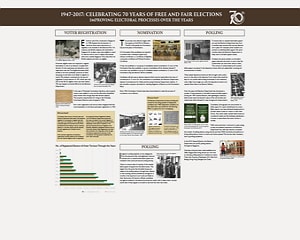Polling
Integrity in polling depends on two safeguards. First, the assurance that only legitimate votes are counted and no unauthorised ballot papers are included in the count; and second, voting secrecy.
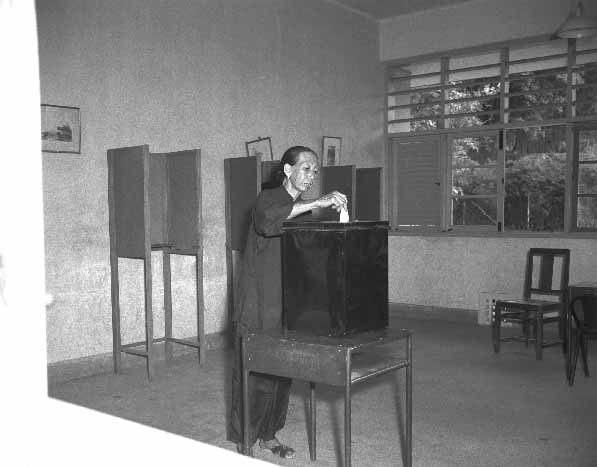
Ministry of Information and the Arts Collection, courtesy of National Archives of Singapore
Voter casting her vote during the Legislative Assembly Election, 1959.
There is a secure chain of custody of the marked ballot papers dropped into the ballot boxes. This begins from the point that the ballot boxes are sealed at the polling stations through their delivery to the counting centres, followed by storage for 6 months in the Supreme Court vault and finally to their destruction. All election officials, candidates and agents involved in the electoral process are under oath to keep voters' choices secret even if they happen to be able to see how the voter had voted.
To ensure that no unauthorised ballot papers are cast, the Elections Department has, from its earliest days, ensured that security features are in place. For example, serial numbers are printed on individual ballot papers. The serial numbers allow the Elections Department to keep track of all ballot papers issued.
However, the serial numbers on the ballot papers have also led voters to worry that the Government can track their votes to them. This concern is unwarranted as all counted ballot papers are placed in the depository boxes which are sealed after counting and announcement of results.
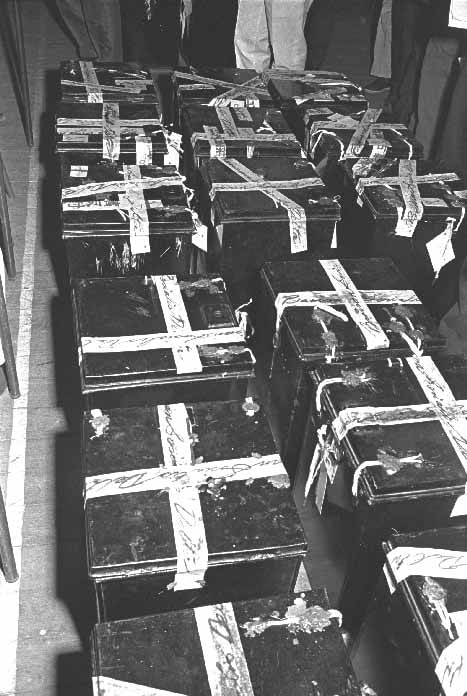
Ministry of Information and the Arts Collection, courtesy of National Archives of Singapore
Sealed ballot boxes at the end of the Legislative Assembly Election, 1963.
These sealed depository boxes are then brought under police escort to the vault at the Supreme Court where they would be kept for six months before being incinerated. In the meantime, only a High Court Judge can order the depository boxes to be opened when there is an Election Petition.
Over the years, the Elections Department has introduced a number of improvements to the ballot boxes and ballot papers. During the 1997 General Election, new lightweight cardboard ballot boxes were introduced in place of the old wooden and metal boxes which allowed for easy storage and transportation.
Candidates' photographs are now printed on ballot papers for easier identification by voters. Ballot papers now have darkened backgrounds to provide clearer boxes for voters to mark their choice. Any marks made outside these boxes are considered invalid, and this facilitates adjudication of votes in cases where the voter's choice is unclear.
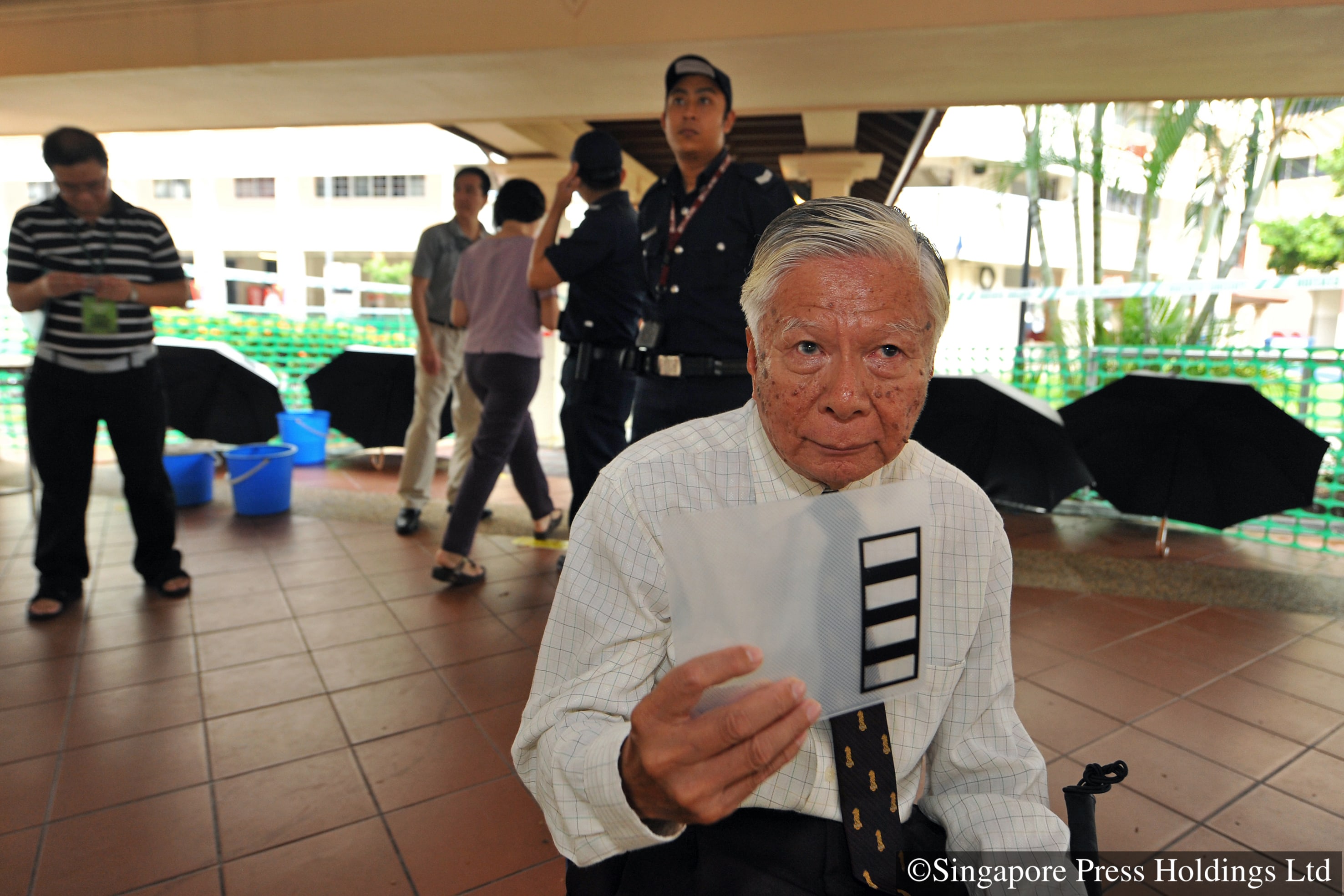
The Straits Times Ⓒ Singapore Press Holdings Limited
Voter holding a stencil which was introduced to assist visually impaired voters with the marking of ballot paper.
With voter-centricity in mind and to make voting an easy and pleasant experience, the Elections Department has, with each election, increased the number of polling stations, using schools and even HDB void decks and pavilions, to bring polling stations closer to voters and reduce queues. This has also been necessary due to growing population.
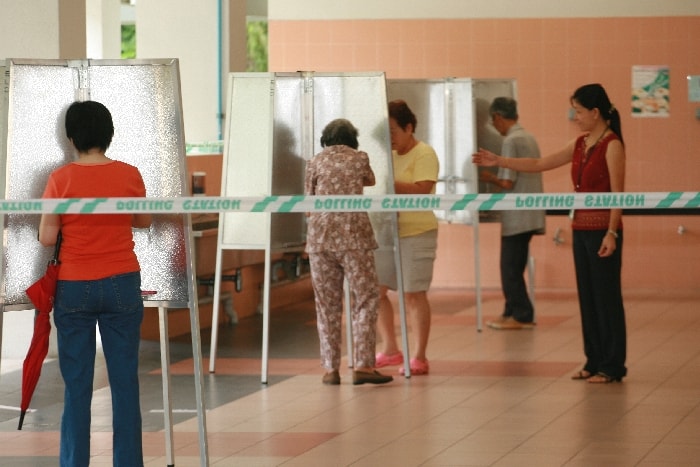
Ministry of Information, Communications and the Arts Collection, courtesy of National Archives of Singapore
Voters marking their ballot papers at a polling station during General Election, 2006.
In the 2015 General Election, the Elections Department set up 832 polling stations throughout Singapore.
Overseas voting has been made available since 2006. Singaporeans living abroad and are registered as overseas voters can now choose to either vote in-person at overseas polling stations in Canberra, London, Tokyo, San Francisco, Washington DC, New York, Beijing, Hong Kong, Shanghai and Dubai, or vote by post.
